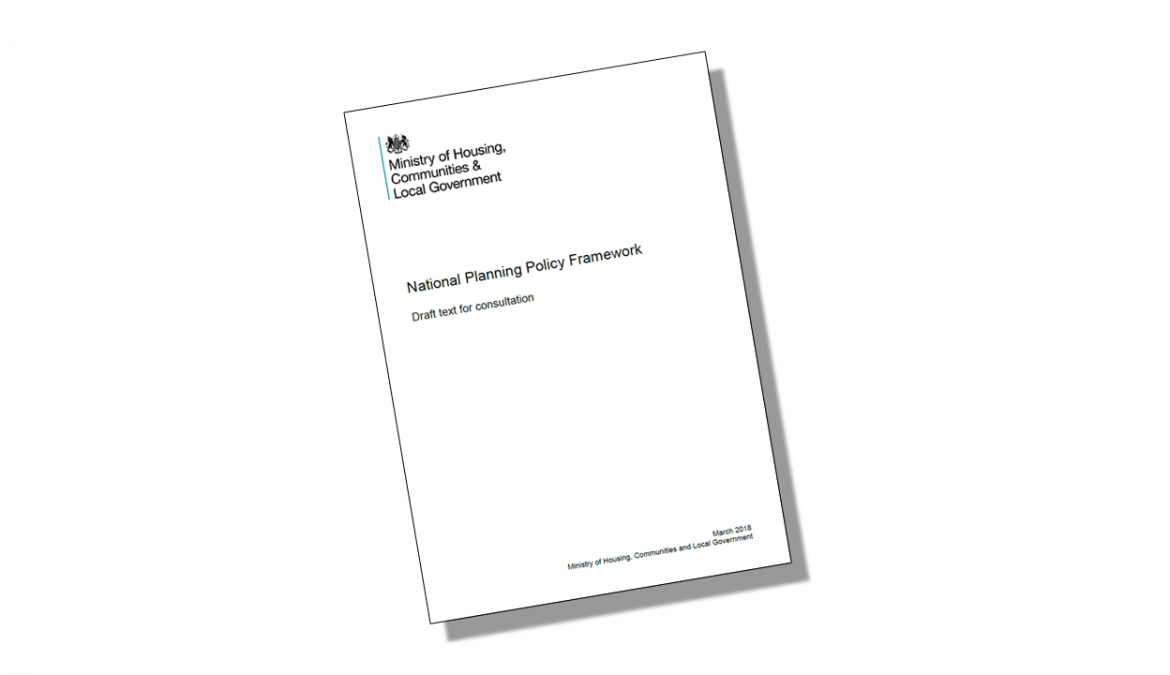Draft Revised National Planning Policy Framework
by Stuart Miles
5th March 2018
Next Article

The Government’s much vaunted revised National Planning Policy Framework was released in draft form today.
To avoid you needing to read it all, this blog summarises the main changes that affect housing supply and affordable housing provision.
Paragraph 14 and the Tilted Balance
Firstly, paragraph 14 is proposed to be reworded (and renumbered to paragraph 11 to keep us on our toes!). It retains the presumption in favour of sustainable development but removes the previous odd reference to golden threads.
The new paragraph 11 proposes to specify that “strategic plans” (local plans of spatial development strategies) should meet objectively assessed needs for housing as a minimum, along with any needs that cannot be met within neighbouring areas. The two exceptions from the current paragraph 14 are then repeated, reworded slightly and reordered, so we now have:
“unless:
- the application of policies in this Framework that protect areas or assets of particular importance provides a strong reason for restricting the overall scale, type or distribution of development in the plan area; or
- any adverse impacts of doing so would significantly and demonstrably outweigh the benefits, when assessed against the policies in this Framework taken as a whole.”
This is materially similar to the “tilted balance” set out in paragraph 14, with additional references to “the overall scale, type or distribution” of development.
The new paragraph 11 then deals with decision taking in much the same way.
“For decision-taking this means:
c) approving development proposals that accord with an up-to-date development plan without delay; or
d) where there are no relevant development plan policies, or the policies which are most important for determining the application are out-of-date, granting permission unless:
i. the application of policies in this Framework that protect areas or assets of particular importance provides a clear reason for refusing the development proposed; or
ii. any adverse impacts of doing so would significantly and demonstrably outweigh the benefits, when assessed against the policies in this Framework taken as a whole.”
Note the reference to “refusing” rather than “restricting” in i. above, and that the current paragraph 14 reference to “where the development plan is absent, silent or relevant policies are out‑of‑date” is proposed to be simplified.
The former footnote 9 (which becomes footnote 7) now additionally refers to “irreplaceable habitats including ancient woodland; aged or veteran trees”.
Triggering the Tilted Balance
Paragraph 75 explains that the “tilted balance” is triggered where “the local planning authority cannot demonstrate a five-year supply of deliverable housing sites (with the appropriate buffer), or where the Housing Delivery Test indicates that delivery of housing has been substantially below the housing requirement over the previous three years.”
The reference to “or” in this sentence means that local planning authorities need to pass both the 5 year supply requirement and the housing delivery test in order for the tilted balance not to be triggered.
The Housing Delivery Test referred to in paragraph 75 is proposed to be monitored initially as at November 2018. Once in place, the “tilted balance” now set out in paragraph 11d is proposed to be engaged where delivery over the past three years was 75% below the requirement, from November 2020. Transitional arrangements are proposed to cover the intervening period. From November 2018 the target is 25%, and from November 2019 it is 45%.
Many authorities that cannot now demonstrate an adequate five year housing land supply will be able to meet the much less onerous Housing Delivery Test, at least during the transition.
Demonstrating a five year supply will require local planning authorities to work with developers to reach an agreed position, based on paragraph 76.
The Tilted Balance and Neighbourhood Plans
Gavin Barwell’s December 2016 Written Ministerial Statement regarding neighbourhood plans is dealt with in a new paragraph 14, which says that, where a neighbourhood plan that allocates land for housing is made, the proposal is not sustainable development if:
- the LPA cannot demonstrate a 3 year housing land supply; or
- where the new Housing Delivery Test indicates that delivery over the previous three years is below 45% of the requirement.
Housing Requirement
Paragraph 61 explains that the minimum number of homes to be specified in strategic plans should be based on a local housing need assessment produced using the “standard method” set out in national planning guidance, unless there are exceptional circumstances that justify an alternative approach.
Details of the methodology are not yet available, but they were detailed in draft here.
In terms of supply and delivery, the 5% and 20% buffers contained in paragraph 47 remain (now paragraph 74), although the former reference to “persistent under delivery” in relation to the 20% buffer is now replaced by “significant under delivery of housing over the previous three years”. This is contrary to many appeal Inspectors who choose longer time frames to take account of the ebb and flow of the economic cycle. From November 2018, the need for this buffer is assessed against the Housing Delivery Test.
A new 10% buffer is now added too, “where the local planning authority wishes to demonstrate a five year supply of deliverable sites through an annual position statement or recently adopted plan”
Paragraphs 66 and 67 require the local planning authority to specify the housing requirement to be met in a neighbourhood plan, ideally by defining this in the strategic plan or, if not, by specifying an indicative figure.
Housing Allocations
Paragraph 68 deals with the strategic allocation of housing sites. Strategic plans should identify “specific, deliverable sites for years one to five” and “specific, developable sites or broad locations for growth for years 6-10 and, where possible, for years 11-15.”
Paragraph 69 encourages smaller housing sites by specifying that at least 20% of all allocations should be half a hectare or less. Paragraph 79 suggests that neighbourhood planning groups should consider allocating smaller sites too.
Affordable Housing
The 2014 Written Ministerial Statement which restricted affordable housing on smaller sites is now included in paragraph 64. However, this now specifies that affordable housing should not be sought on sites that are not “major”, i.e. ten or more. Current Planning Practice Guidance limits affordable housing on sites of ten units or less. This means that sites of exactly ten dwellings would need to provide affordable homes, where currently they don’t.
Paragraph 65 requires a provision of 10% of homes to be for affordable home ownership, as part of the overall affordable housing requirement.
Paragraph 72 promotes “entry level exception sites” suitable for first time buyers or first time renters (reference to “starter homes” is conspicuously absent!). These developments need not be entirely affordable however. The proposal is that they would comprise a “high proportion” of entry level homes, and they must be adjacent to existing settlements and proportionate in size to the settlement.

